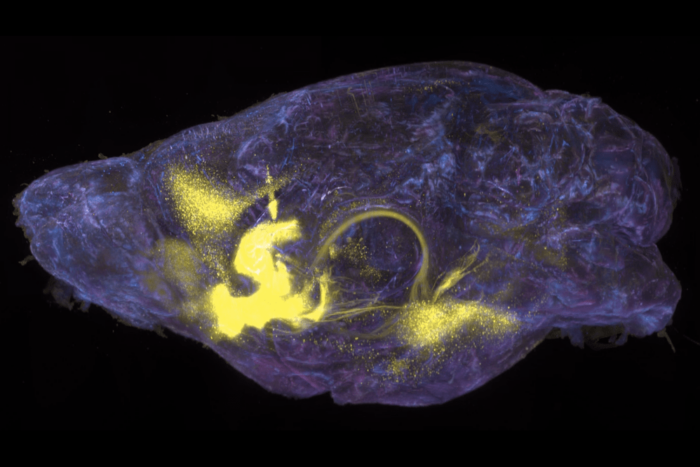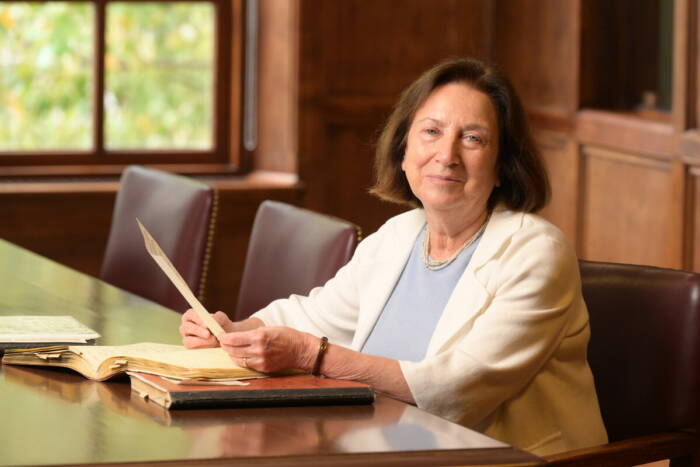Tim O’Connor named VP and chief of staff
by ZACH VEILLEUX
When Timothy P. O’Connor left his faculty position in the department of genetic medicine at Weill Cornell Medical College in 2009, it was for an opportunity he couldn’t pass up — to be associate provost for science and technology at Yale University. He would be a key part of the leadership team in charge of tackling tough questions about how best to allocate resources to support scientists. But it also meant leaving the city he had come to love as his adopted hometown.
 After four years in New Haven, however, he has made his way back to New York, landing just a block away from the institution he called home for seven years. The role he has accepted at Rockefeller is not unlike the one he had at Yale, but Rockefeller’s lean administration and exclusive scientific focus, along with its ambitious new strategic plan, means he will have the opportunity to focus on both the big picture issues and day-to-day operations involved in running the institution.
After four years in New Haven, however, he has made his way back to New York, landing just a block away from the institution he called home for seven years. The role he has accepted at Rockefeller is not unlike the one he had at Yale, but Rockefeller’s lean administration and exclusive scientific focus, along with its ambitious new strategic plan, means he will have the opportunity to focus on both the big picture issues and day-to-day operations involved in running the institution.
The search for a vice president to oversee strategy and manage the research support and administrative departments began over a year ago, when President Marc Tessier-Lavigne completed the university’s nine-year strategic plan and began the work of implementing its elements. Dr. Tessier-Lavigne’s need for additional support in the president’s office coincided with the retirement of John Tooze (see “John Tooze, VP of scientific and facility operations, retires,” page 2), who had overseen many of the same functions under the Paul Nurse administration.
After a national search led by the same executive recruiting firm the university used in the search for a president in 2011, several candidates were identified. But Dr. O’Connor quickly emerged as the finalist.
“I knew as soon as I met him that Tim was a perfect fit for Rockefeller,” says Dr. Tessier-Lavigne. “His background in bioscience, his executive experience at Cornell and Yale and his thoughtful, supportive management style would allow him to be both an effective leader and an adviser. He was exactly the person I was looking for to not only take over for John, but to play a key role in running the president’s office as my chief of staff.”
Dr. O’Connor was named vice president for university strategy and research operations, as well as chief of staff in the president’s office, in April. He started in June.
Originally from Los Angeles, Dr. O’Connor majored in biology at the University of California, Berkeley, and went to the University of Michigan for his Ph.D. and to UCLA for his postdoc, where he worked in Jared Diamond’s laboratory. He moved to New York the first time in 1998, and set up a lab at City College of New York. Although he enjoyed the opportunity to train and mentor the diverse student body at CCNY in science, when the opportunity arose to join a translational research team at Weill Cornell, he took it. He began as an administrator and director of facility operations in the department of genetic medicine, and ended up as associate research professor and vice chair.
“The positions I held at Weill Cornell over seven years were fantastic, because my work there was really a combination of hands-on science and administration, where I had the opportunity to not only do my own work but to help support the work of my colleagues,” says Dr. O’Connor.
He moved to Yale in 2009 to become associate provost for science and technology, helping to administer financial resources and scientific support services not just for the biosciences, but for chemistry, physics, engineering, astronomy, computer sciences and other disciplines. It was an opportunity to learn a lot about diverse fields of science, and a challenge to ensure that shared resources in the various disciplines — sequencing runs, telescope time, etc. — were allocated strategically.
As a biologist at heart, however, the opportunity to come to Rockefeller was one he couldn’t ignore. So last June, he and his wife Julie Boyer, also a biologist, returned to New York City with their Weimaraner, Steeler (Julie is a football fan originally from Pittsburgh).
“There were really three things that ultimately convinced me to come to Rockefeller,” Dr. O’Connor says. “The opportunity to be a part of this unique, incredible institution, the chance to return to New York City, and the ability to work closely with Marc, who I immediately clicked with and who has a strong and smart vision for the university.”
Dr. O’Connor’s position is actually a combination of two positions. In his role as vice president, he is responsible for several important functions on campus, including Research Support, Technology Transfer, Information Technology, Communications and Public Affairs, Plant Operations and Housing, Planning and Construction, The Rockefeller University Press and Security. As chief of staff, he provides high-level support and advice to the president, and assists in developing and implementing strategy. He aims to be a resource for Dr. Tessier-Lavigne as well as one for the community, where he can provide guidance on issues that require input from the president’s office but not necessarily a direct response from the president.
“The two roles are closely related, so in many ways it’s logical to have one person doing both,” says Dr. O’Connor. “Although it might not be possible at a larger institution, it makes sense for Rockefeller. The expertise and talent of the department heads who report to me also makes it feasible, and they are a big reason why so many things can be accomplished smoothly and efficiently.”
“As we move forward with implementing our strategic plan, including a complex building project and several new scientific initiatives, it’s going to be critical that we have a capable leader keeping everyone on the same page,” says Dr. Tessier-Lavigne. “Since the moment he arrived, Tim has hit the ground running, quickly getting up to speed on both the big-picture projects and the day-to-day operations of the university. As those who have been working with him for the past several months can attest, he has already made himself indispensable.”


